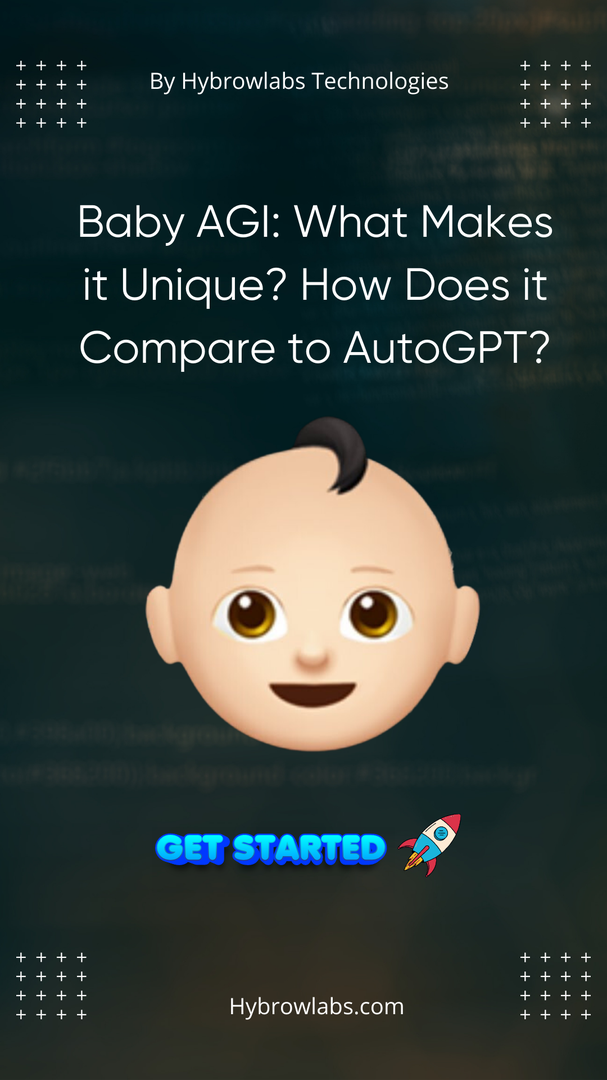
Embarking on a fascinating exploration of cognitive development, we enter the realm of Baby AGI. This visionary concept aims to replicate the learning processes and cognitive milestones observed in human infants. By harnessing the power of artificial intelligence, Baby AGI delves into the intricacies of perception, sensorimotor coordination, and cognitive growth during the early stages of life. But how does Baby AGI compare to AutoGPT, the automated architecture search engine? Let’s explore!
Let’s start with understanding
What Is Baby AGI?
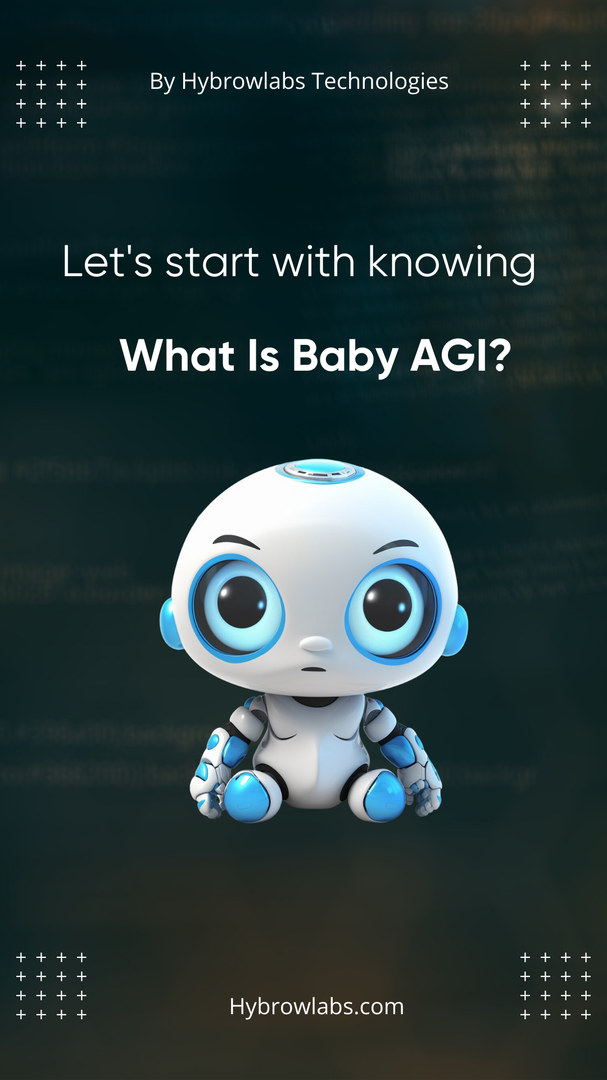
Baby AGI refers to the concept of developing an artificial general intelligence (AGI) system specifically designed to emulate the cognitive abilities and learning processes of an infant. The term "Baby AGI" is a hypothetical construct that represents an AGI system focused on early-stage cognitive development.
In essence, Baby AGI aims to replicate the early learning capabilities observed in infants, including perception, sensory processing, motor skills, and cognitive development. It strives to simulate the way infants interact with their environment, acquire new knowledge, and develop foundational cognitive skills.
The concept of Baby AGI draws inspiration from developmental psychology and cognitive science, which study the cognitive milestones and learning mechanisms observed in human infants. By emulating these early developmental processes, Baby AGI seeks to unlock insights into how intelligence emerges and evolves in its early stages. If we implement LangChain with BabyAGI it revolutionizes Infant Development and Intelligence. You can read our latest blog post on Unlocking the Potential of BabyAGI: How LangChain Could Transform Infant Development and Intelligence?
How To Use Baby AGI?
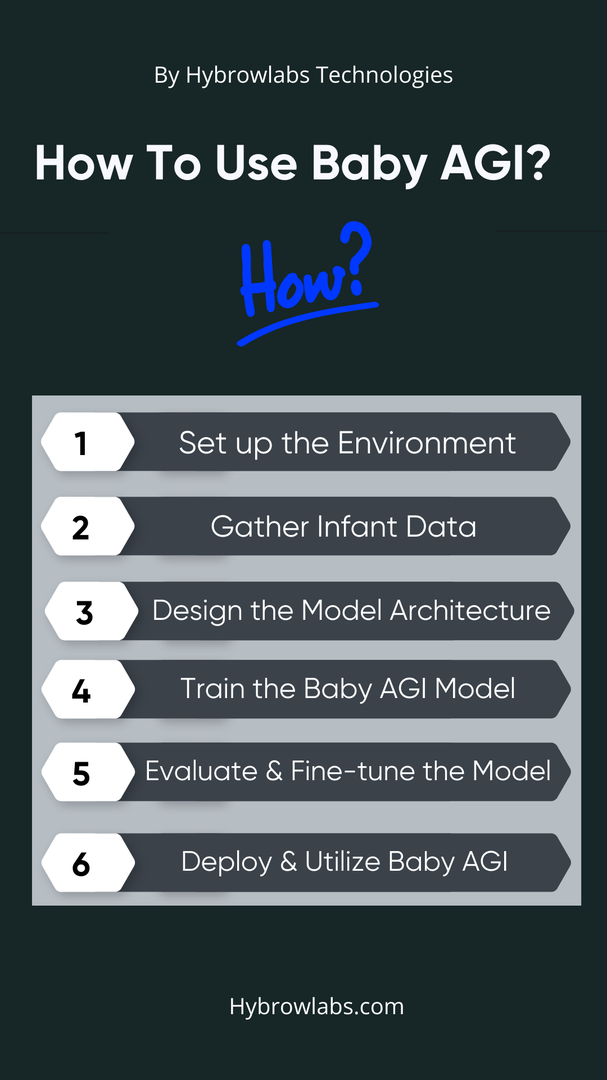
Step 1: Set up the Development Environment
Start by creating a development environment with the necessary tools and libraries for implementing Baby AGI algorithms. This may include installing machine learning frameworks like TensorFlow or PyTorch and setting up a programming environment.
import tensorflow as tfimport numpy as np# Additional libraries and tools setup
Step 2: Gather Infant Data
Collect a diverse and representative dataset of infant developmental milestones, sensory inputs, and learning patterns. This dataset will serve as the foundation for training and fine-tuning the Baby AGI model.
# Collect and preprocess infant datainfant_data = ... # Your dataset collection processpreprocessed_data = ... # Preprocess the data as required
Step 3: Design the Baby AGI Model Architecture
Design the neural network architecture that will mimic infant cognitive processes. This may involve creating layers for perception, sensorimotor coordination, and cognitive growth, taking inspiration from developmental psychology and neuroscience.
# Baby AGI model architecturemodel = tf.keras.Sequential([# Perception layerstf.keras.layers.Conv2D(...),tf.keras.layers.MaxPooling2D(...),# Sensorimotor coordination layerstf.keras.layers.Dense(...),tf.keras.layers.Dropout(...),# Cognitive growth layerstf.keras.layers.GRU(...),# Output layertf.keras.layers.Dense(..., activation='softmax')])
Step 4: Train the Baby AGI Model
Train the Baby AGI model using the preprocessed infant data. This involves feeding the data through the model, adjusting the model's weights and biases through backpropagation, and optimizing the model's performance using appropriate loss functions and optimization algorithms.
# Define loss function and optimizerloss_fn = tf.keras.losses.CategoricalCrossentropy()optimizer = tf.keras.optimizers.Adam()# Compile and train the modelmodel.compile(optimizer=optimizer, loss=loss_fn)model.fit(preprocessed_data, epochs=num_epochs, batch_size=batch_size)
Step 5: Evaluate and Fine-tune the Baby AGI Model
Evaluate the performance of the trained Baby AGI model using appropriate evaluation metrics. If necessary, fine-tune the model by adjusting hyperparameters, exploring different architectures, or incorporating additional data to enhance its cognitive abilities.
# Evaluate the modelevaluation_results = model.evaluate(test_data)# Fine-tune the model if required# Modify architecture or hyperparametersmodel.fit(more_data, epochs=num_epochs, batch_size=batch_size)
Step 6: Deploy and Utilize Baby AGI
Once the Baby AGI model is trained and fine-tuned, it can be deployed for various applications. This may involve integrating it into systems that require infant-inspired cognitive abilities, such as early childhood education platforms, healthcare interventions, or human-machine interaction interfaces.
# Save the trained model for deploymentmodel.save('baby_agi_model')# Deploy the model for specific applications# Integrate with relevant systems and interfaces
Understanding AutoGPT
AutoGPT is an advanced variant of the GPT (Generative Pre-trained Transformer) model that focuses on automating the process of architecture search and optimization for language models. It utilizes innovative techniques to automatically discover and fine-tune model architectures, aiming to improve performance and efficiency.
AutoGPT automates the process of architecture search and optimization for language models. By leveraging automated techniques and large-scale training, it aims to enhance the performance and efficiency of language generation tasks, pushing the boundaries of AI research and development in natural language processing.
What Is The Comparison Between Baby AGI And AutoGPT?
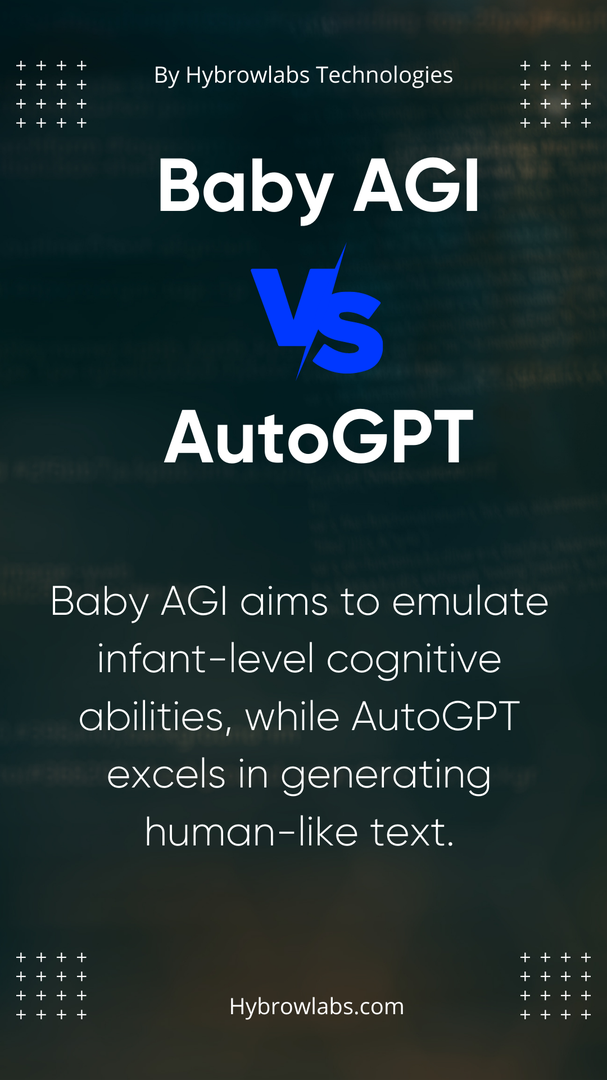
1. Development and Training Process
A. Baby AGI
1. Development involves designing a specialized artificial general intelligence (AGI) system for infant-level cognitive abilities.
2. Training process includes exposing the model to a wide range of data and tasks, gradually increasing complexity and learning capabilities.
B. AutoGPT
1. Developed as a variant of the GPT model architecture.
2. Training process involves large-scale unsupervised learning using diverse internet text data.
2. Capabilities and Limitations
A. Baby AGI
1. Emulates the cognitive abilities of an infant, with a focus on early learning and perception.
2. Limited cognitive abilities compared to a fully developed AGI system.
3. Emphasizes learning and exploration through interaction with the environment.
B. AutoGPT
1. Capable of generating human-like text responses and performing language-related tasks.
2. Lacks a broader understanding of the world and lacks capabilities beyond language processing.
3. Primarily focused on generating coherent and contextually appropriate text.
3. Use Cases and Applications
A. Baby AGI
1. Potential applications in cognitive development research and understanding early learning processes.
2. Can be used as a tool for creating interactive and adaptive educational content for infants.
B. AutoGPT
1. Widely used for various natural language processing tasks, such as text generation, summarization, and translation.
2. Can assist in content creation, chatbots, virtual assistants, and other language-based applications.
4. Ethical Considerations
A. Baby AGI
1. Ethical implications of creating and using a system that emulates infant cognition need to be carefully considered.
2. Concerns regarding data privacy, consent, and potential risks associated with infant-level AI systems.
B. AutoGPT
1. Ethical considerations include issues related to bias, misinformation, and potential misuse of AI-generated content.
5. Environment
A. Baby AGI
1. Requires a controlled and structured environment to facilitate learning and development.
2. Interaction with the physical world and sensory input is crucial for its training and understanding.
B. AutoGPT
1. Operates in a digital environment, primarily processing and generating text-based data.
2. Does not require a physical or sensory-rich environment for training.
6. Price
A. Baby AGI
1. Development and training of specialized AGI systems like Baby AGI can be resource-intensive and costly.
2. Requires substantial investment in research, data collection, computational infrastructure, and expert personnel.
B. AutoGPT
1. AutoGPT, being a variant of the GPT model, benefits from previous advancements and cost-saving measures in language model development.
2. While training large-scale models like GPT can still be computationally expensive, it benefits from economies of scale and established infrastructure.
7. Role of Code:
A. Baby AGI:
The development of Baby AGI would involve implementing code that simulates the cognitive processes of infants. This could include building algorithms and models that mimic perception, sensorimotor coordination, and learning mechanisms observed in infants.
B. AutoGPT:
Code plays a crucial role in AutoGPT's development. It encompasses the implementation of automated architecture search algorithms, model training procedures, and optimization techniques. The code would enable the exploration and evaluation of various architectures, fine-tuning of models, and assessing their performance on specific language generation tasks.
Challenges & Concerns in Baby AGI Development & Deployment:

1. Safety and Control:
- Unintended Behavior: Baby AGI could exhibit unpredictable or unintended behaviors that are difficult to anticipate or control, leading to potential risks or adverse consequences.
- Lack of Explainability: Understanding the decision-making processes of Baby AGI might be challenging due to its complexity, making it hard to ensure transparency, accountability, and error correction.
2. Ethical Implications:
- Privacy and Data Security: Collecting and analyzing sensitive data related to infants' development raises concerns about privacy protection, data security, and potential misuse of personal information.
- Fairness and Bias: Baby AGI systems must be designed and trained to ensure fairness, prevent biases, and avoid perpetuating societal inequalities or discriminatory practices.
3. Social and Economic Impact:
- Job Displacement: The automation of tasks related to infant care or early education could have implications for job markets, potentially leading to job displacement or shifts in employment patterns.
- Technological Dependency: Excessive reliance on Baby AGI may reduce human interaction and caregiver involvement, potentially affecting social and emotional development in infants.
Conclusion:
Overall, Baby AGI represents a thought-provoking area of research with the potential to revolutionize our understanding of infant development and cognitive processes. As we explore this concept, it is crucial to approach it with caution, addressing the challenges and ethical considerations to ensure its responsible and beneficial integration into our society.
Hybrowlabs, a leading organization in the field of Baby AGI, offers valuable assistance and support in navigating the complexities of this emerging technology. Our expertise and innovative solutions help you explore the potential of Baby AGI and address associated challenges. With comprehensive research and development capabilities, we focus on infant development and cognitive processes in the context of Baby AGI. We prioritize ethical considerations, ensuring responsible integration of technology into society. To learn more about our services and how Hybrowlabs can help in exploring Baby AGI, visit our service page.
FAQ:
1. How is Baby AGI used?
Baby AGI is primarily used for research purposes to gain a deeper understanding of infant cognition and cognitive development. It involves developing algorithms and models that simulate the learning processes of infants, contributing to fields such as developmental psychology, cognitive science, and neuroscience.
2. How does Baby AGI compare to AutoGPT?
Baby AGI and AutoGPT serve different purposes within the field of artificial intelligence. Baby AGI focuses on replicating infant cognition and early developmental processes, whereas AutoGPT is an automated architecture search engine that optimizes language models for natural language processing tasks.
3. What are the practical applications of Baby AGI?
While Baby AGI is still a theoretical concept, it holds potential in various areas. It could advance our understanding of early human development, improve early childhood education by providing personalized learning experiences, support healthcare interventions for infants, contribute to AI research, and enhance human-machine interaction in sensitive contexts.
4. What are the benefits of using Baby AGI?
Baby AGI offers the potential to gain insights into infant cognition, advance early childhood education, improve healthcare interventions, contribute to AI research, and enhance human-machine interactions. It could foster a deeper understanding of human development and drive advancements in various fields while promoting ethical considerations.
5. What are the key differences between Baby AGI and AutoGPT?
Baby AGI and AutoGPT differ in their objectives and focus. Baby AGI aims to replicate infant cognition, while AutoGPT focuses on automating architecture search and optimization for language models. They serve different domains within AI research but contribute to the overall advancement of artificial intelligence in distinct ways.



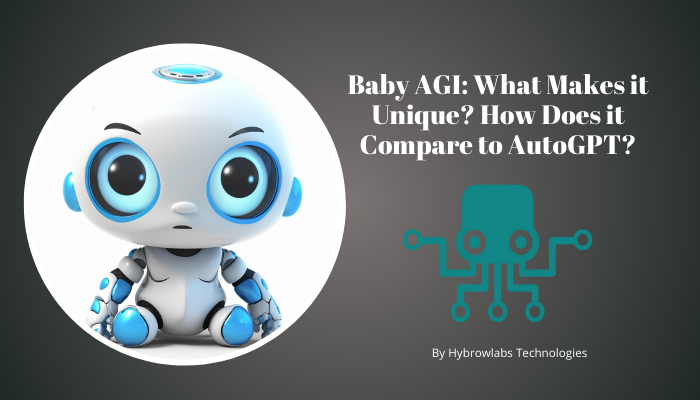


a3dc85.jpg)

.jpg)
fd8f11.png)

.jpg)
.jpg)